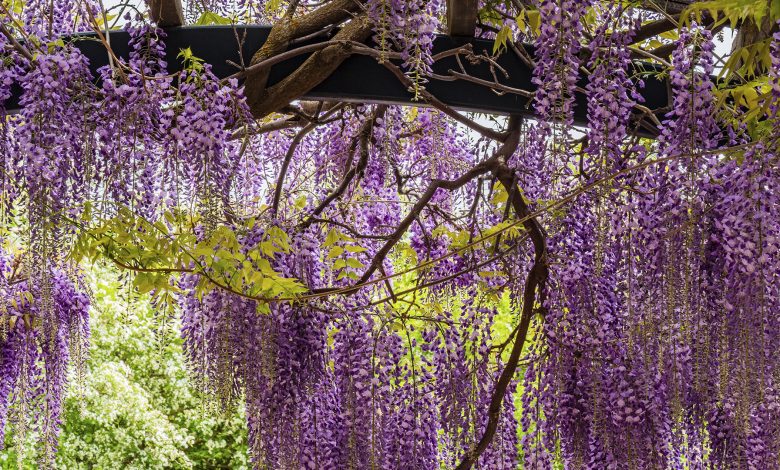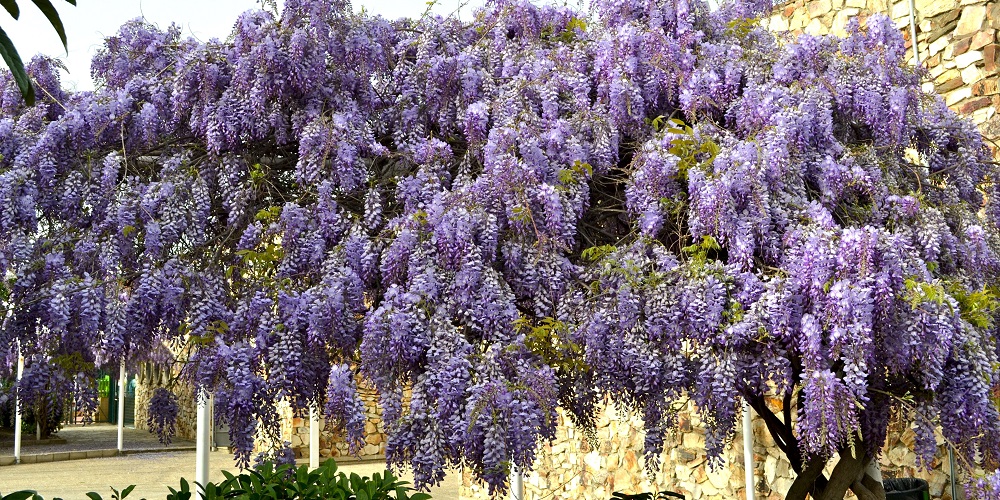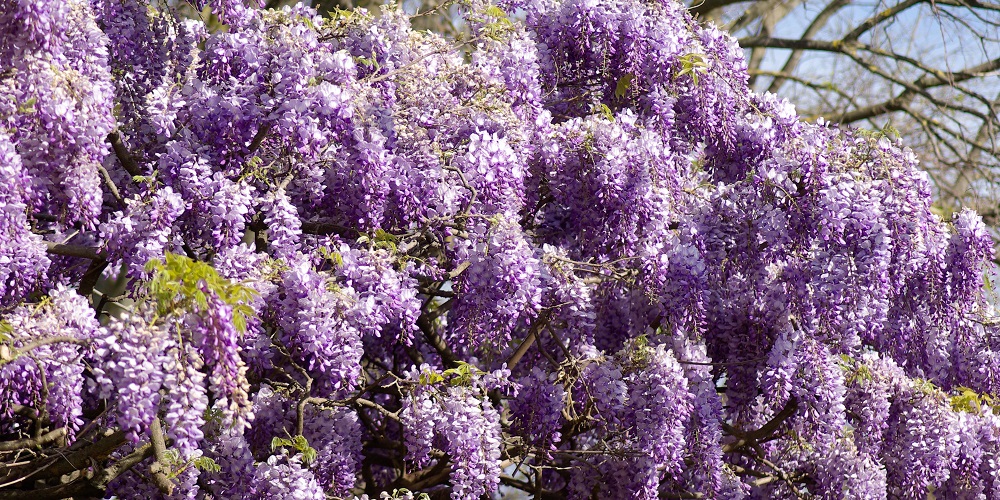Properties, cultivation and care of wisteria, an ornamental plant

An inevitably captivating sight is passing under a tunnel of amazing clusters of violet, blue, white and purple flowers. This is the case in several botanical gardens. However, with a wisteria it is possible to recreate that scene in the home and its care is not as difficult as some might suppose.
Wisteria sinensis or wisteria frutescens are the scientific names for two of the most common species of wisteria, a plant that captivated European travelers who visited China more than two hundred years ago. They were the ones who were responsible for disseminating copies to various places, Spain not being the exception, where you can still see, even today, some historic plants such as the radio museum in Ponferrada.
Exotic and attractive not only for the color of their flowers, but also for the tender green of their exuberant foliage, wisteria attract attention throughout the year . Also, because their branches are woody, they can cling firmly to the structure that supports them. For this reason, wisterias are very suitable for forming tunnels and covering corridors that need to be shaded.
When it comes to the color of the flowers, you can find pink wisteria options, ranging from pale to some more lively. There is also the blue version, the white wisteria and some variations that combine white and mauve or mauve only.

Properties
Wisterias are fast-growing plants, which should preferably be planted directly in the ground, since they need deep soil. Although you could also have a potted wisteria if you provide it with a large enough container and place it near the stake that will support it. In these cases, the plant may not develop the proportions of a wisteria tree, but by having a greater number of specimens, it will surely be possible to effectively cover the desired place, depending on its length.
On the other hand, for those who are attracted to small plants, the good news is that there is no restriction on how you can transform a young wisteria into a bonsai. Only the right plant should be placed in the expert hands of craftsmen.
For this type of project, the qualities of the species wisteria sinensis and wisteria floribunda are used, which have given rise to beautiful bonsai versions of wisteria, capable of flowering.
the right place
To have a healthy wisteria plant that is able to flourish, you must be very careful to choose the right place , whether it is in a pot or in the ground. This is partly due to the fact that it does not tolerate transplanting and it will probably not be possible to realize, until after a couple of years, that the site does not contribute to its flowering.
Among the aspects that must be taken into account is ventilation . Wisteria does not like places with strong drafts. Instead, he likes places that have good lighting .
Providing the right type of soil
The substrates (in this link you will find several products to analyze) to choose for the wisteria are those that allow effective drainage. For this reason, among other options, peat, mulch and perlite are used when it cannot be put into the ground.
A very important aspect to consider when choosing this plant is its toxicity. In particular, care should be taken with wisteria fruits, since, because they are very similar to beans, they could be accidentally ingested by small children.

What to do to make it bloom
Wisteria is appreciated mainly for its flower beds, so special attention should be paid to providing the conditions that encourage the appearance of the long-awaited clusters in the plant.
- Maturity: Even if you have given the wisteria sufficient care during the growth of the cutting and its foliage has reached a couple of meters, it may take a couple of years to give its first clusters.
- Reach of its branches: The priority of the wisteria focuses on reaching the highest possible height in the structure on which it extends. Therefore, it will not flower until it detects that it cannot have more vertical growth.
- Amount of Sun It Receives: The number of flowers on a wisteria is directly related to the light it receives. For this reason, in geographical areas with a lot of cloudiness, flowering will be less.
- Pruning: For wisteria, pruning is very important. Each year, some branches will need to be removed at the end of each blooming season. Similarly, another review should be done before spring.
The process consists of cutting the longest branches, which protrude from their central support by more than 30 to 40 centimeters. In this way, it is possible to ensure that it will retain its shape, adapting to the desired support and tunnel. For its part, the lateral branches, to promote flowering, should be left with only two buds. In the same way, it is advisable to eliminate the shoots that appear in the center of these two buds.
- Fertilizer: Contrary to what one might think, a fertilizer saturated with nitrogen can make the wisteria grow foliage, but it will not contribute to its flowering, so a well-balanced product must be chosen. Something that can be practical is to resort to the same fertilizer used for rose bushes.
After reading our post, if you have a terrace that lacks a touch of color, you might consider getting a wisteria. The care is not too many and the beauty that it brings with its flowers is indisputable. In addition, it is a species that could live up to 100 years. So, once established, it will serve its decorative purpose for a long time.

![Photo of How to Plant Broad Beans in your Garden: Complete Guide in [12 Steps]](https://www.complete-gardening.com/wp-content/uploads/2022/08/how-to-plant-broad-beans-in-your-garden-complete-guide-in-12-steps-390x220.jpg)
![Photo of Citrus Miner: [How to Identify and Fight It]](https://www.complete-gardening.com/wp-content/uploads/2022/08/citrus-miner-how-to-identify-and-fight-it-390x220.jpg)
![Photo of Transplant Peppermint: [Conditions, Time, Tools and Steps to follow]](https://www.complete-gardening.com/wp-content/uploads/2022/08/transplant-peppermint-conditions-time-tools-and-steps-to-follow-390x220.jpg)
